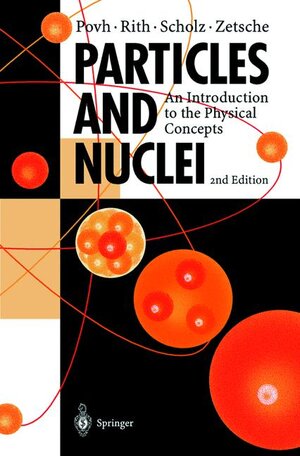
×
![Buchcover ISBN 9783540661153]()
Particles and Nuclei
An Introduction to the Physical Concepts
von Bogdan Povh, Klaus Rith, Christoph Scholz und Frank Zetsche, übersetzt von M. LavelleThe second English edition has been updated from the fifth edition of the original German text. The principal addition is a chapter on nuclear ther modynamics. We consider in this chapter the behaviour of nuclear matter at high temperature, how it may be studied in the laboratory, via heavy ion experiments and how it was of great importance in the initial stages of the universe. Such a phase of matter may be described and interpreted using the tools of thermodynamics. In this way a connection between particle and nuclear physics and the currently exciting research areas of cosmology and astrophysics may be constructed. We would like to thank Martin Lavelle (Plymouth) for the translation of the new chapter and for revising the old text and Jurgen Sawinski (Heidelberg) for the excellent work he has done in reformatting the book. Heidelberg, May 1999 The Authors Preface to the First Edition The aim of PARTICLES AND NUCLEI is to give a unified description of nuclear and particle physics because the experiments which have uncovered the substructure of atomic nuclei and nucleons are conceptually similar. With the progress of experimental and theoretical methods, atoms, nuclei, nucleons, and finally quarks have been analysed during the course of this century. The intuitive assumption that our world is composed of a few constituents - an idea which seems attractive, but could not be taken for granted - appears to be confirmed.





